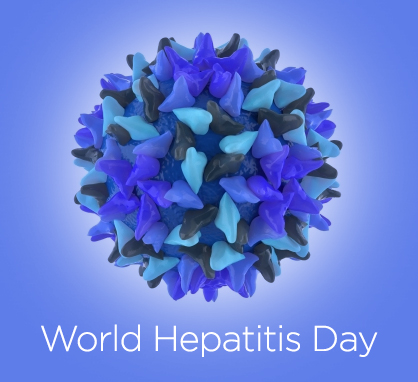Honoring World Hepatitis Day
One of the most major diseases around today, viral hepatitis kills as many people each year as HIV/AIDS. About 500 million individuals are currently chronically infected, but most who are infected are unaware they have the disease. Yet hepatitis receives little attention, political priority and action around the world.
“The real tragedy of viral hepatitis is that it is largely preventable and the resulting deaths are almost completely preventable,” Charles Gore, president of the World Hepatitis Alliance, said. “It is also a tragedy that there are so many patient voices out there that are simply not being heard. Global actors have left viral hepatitis off their agendas, leading to a cycle of inaction which leaves millions of patients simply being ignored. We could eliminate it, and yet the world is turning a blind eye to the 8th biggest killer disease worldwide … Viral hepatitis affects everyone, everywhere, and the lack of action to tackle it is simply inexplicable.”
The word “hepatitis” means inflammation of the liver. Although hepatitis can be caused by a great variety of things, one of the most common causes of long-term hepatitis is viral infection, such as hepatitis B and C, which lead to 1 million deaths each year. Together, these two viruses are considered one of the top threats to global health. Hepatitis B is spread through contact between bodily fluids such as blood, saliva, semen and vaginal fluid. As “silent” viruses during which many affected individuals experience no symptoms, it is critical to get tested if you may have been at risk. If not treated, hepatitis B and C can lead to liver scarring, known as cirrhosis, which can, in turn, cause bleeding, accumulation of fluid in the abdominal cavity, coma, liver cancer, liver failure and death.
“A person can be infected but without symptoms for decades,” Gore said. “By the time the symptoms start to show or the virus is detected, not only may the liver have degenerated so much a transplant is the only option, but the person infected could have transmitted the virus unknowingly to many others over the course of decades. Without mass awareness, these viruses are not only hard to detect, but spread easily, and become harder and harder to treat the longer they are hidden.”
Sponsored by the World Hepatitis Alliance, World Hepatitis Day encourages people to consider the massive scale of the disease internationally and to assess their risk and avoid infection. Through thousands of events around the world, the annual effort attempts to prevent new infections, increase access to testing and improve outcomes and treatment options for people living with hepatitis.
“Today, viral hepatitis infections are on the rise,” Gore said. “It still does not have the priority or urgency that its mortality rate should mandate, and it is for this reason that we carry out so much advocacy on a global scale. We are pushing hard to get increased recognition in global health programs, to get comprehensive viral hepatitis strategies in place in all countries, and to support patient groups around the world. Thanks to this, we are finally seeing shifts in the global health landscape, and we are at a point where it does feel like people are beginning to look at the figures and see that we must commit more to tackling this silent epidemic … With concerted effort, we could eliminate viral hepatitis within our lifetime, and hopefully this is where we are headed.”
Launched in recognition that in no other arena is the gap so huge between the burden of disease and the level of awareness, World Hepatitis Day was created in 2008 and is now one of only seven official World Health Organization Days, officially endorsed by the United Nations.
“Like any world health day, World Hepatitis Day is a chance for governments, healthcare workers, patients and advocates to put on activities that alert the general public to the need to learn about viral hepatitis, how to prevent it and the need to consider being tested,” Gore said. “This includes banishing some of the myths that so often lead to stigma and discrimination. World Hepatitis Day can also be a time for reflection. We have come a long way in the past year, creating a patient voice at higher and higher levels, and engaging in dialogues with governments, pushing viral hepatitis higher on the agenda. We have seen huge breakthroughs in hepatitis C drugs, and access to treatment is starting to get more attention as a global issue. But we also accept that there are still many challenges to be overcome if we are to get viral hepatitis the recognition it deserves.”
This year’s theme is “This is hepatitis. Know it. Confront it,” concentrating on the real-life effect of viral hepatitis, and “See No Evil, Hear No Evil, Speak No Evil,” which is based on the three actions of the monkeys: As the monkeys ignore what is happening around them, so has our society been ignoring hepatitis. In honor of the theme, the World Hepatitis Alliance is sponsoring an international attempt to break a Guinness World Record by having the most individuals performing the “see no evil, hear no evil, speak no evil” actions across the globe within the same 24 hours. In 2012, 12,588 people did the Three Wise Monkey Actions, and the alliance aims to surpass that this year.
For more information, visit www.worldhepatitisalliance.org.
Tagged in: causes, philanthropy, event, disease,

LadyLUX



